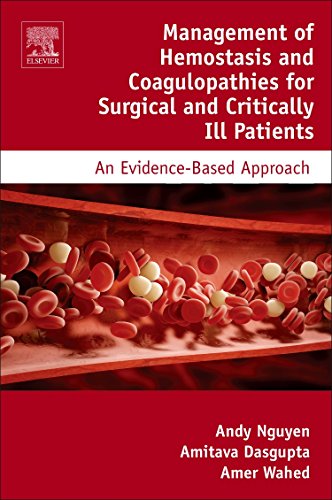

Most ebook files are in PDF format, so you can easily read them using various software such as Foxit Reader or directly on the Google Chrome browser.
Some ebook files are released by publishers in other formats such as .awz, .mobi, .epub, .fb2, etc. You may need to install specific software to read these formats on mobile/PC, such as Calibre.
Please read the tutorial at this link: https://ebookbell.com/faq
We offer FREE conversion to the popular formats you request; however, this may take some time. Therefore, right after payment, please email us, and we will try to provide the service as quickly as possible.
For some exceptional file formats or broken links (if any), please refrain from opening any disputes. Instead, email us first, and we will try to assist within a maximum of 6 hours.
EbookBell Team

4.0
26 reviewsManagement of Hemostasis and Coagulopathies for Surgical and Critically Ill Patients: An Evidence-Based Approach offers a concise guide to a sub-specialty of transfusion medicine from the clinical laboratory perspective. It focuses on the clinical tests that may be done during preoperative assessment, intraoperative, and postoperative assessment and management of surgical or critically ill patients. Management of hemostasis and coagulopathies is approached from an evidence-based perspective―the coagulation status of a patient according to the laboratory test results. Algorithms and decision-support software, designed by the authors, guide clinicians with an additional tool to base transfusion dosage on specific laboratory results, including the use of an artificial neural network for predicting more accurate blood use.
Chapters reflect the experience of all three authors who have successfully applied the algorithm for better patient management as well as decreased wastage of expensive blood products, from both the clinical laboratory/pathology and clinical medicine perspective. This book will appeal to a broad section of clinical laboratory and medical practitioners from hematopathology, to internal medicine, surgery, and anesthesiology. For hematopathologists and pathologists who are involved in laboratory medicine and transfusion medicine, this book will help them understand the proper utilization of blood products and how to avoid unnecessary waste and costs for the hospital. For general surgery practitioners, this book will provide practical guidelines on how to use blood products rationally for best medical practice. Internists will also gain insight from this book, learning which patients are at higher risk of bleeding during surgery so that they can alert their clinical colleagues.